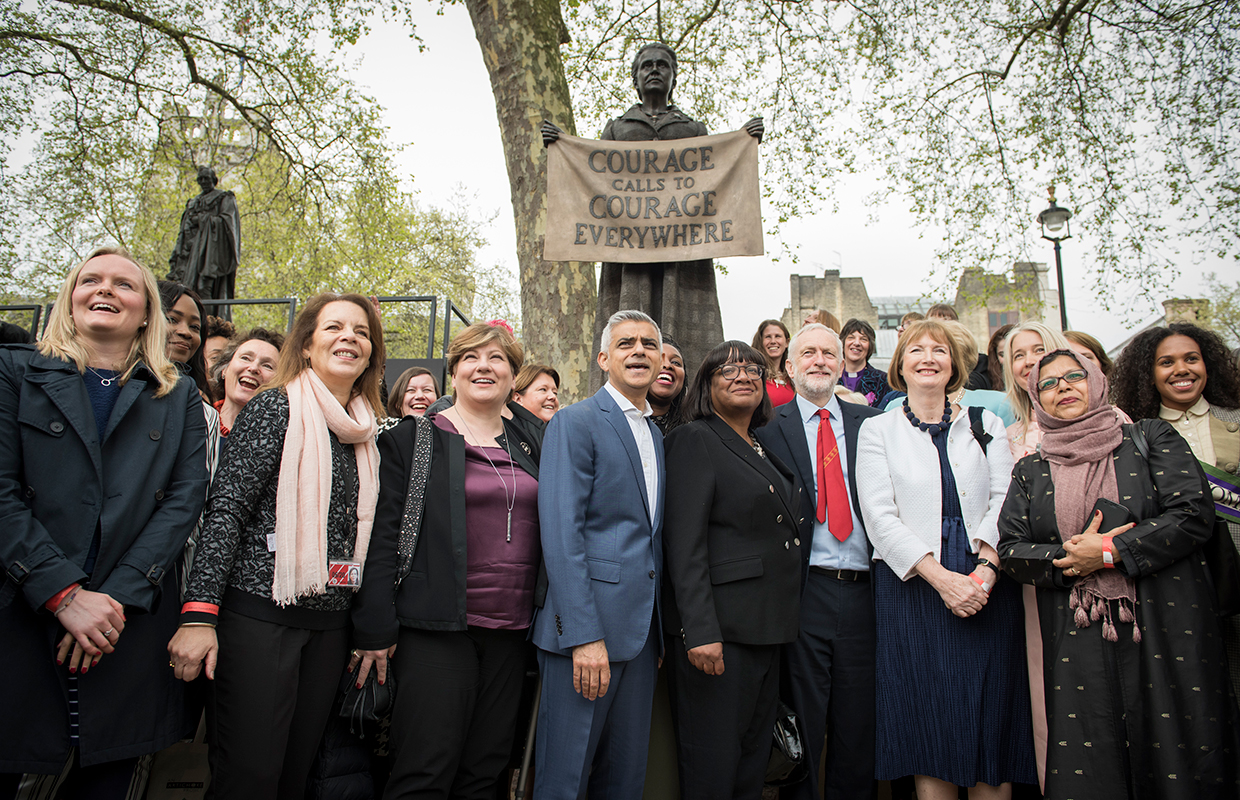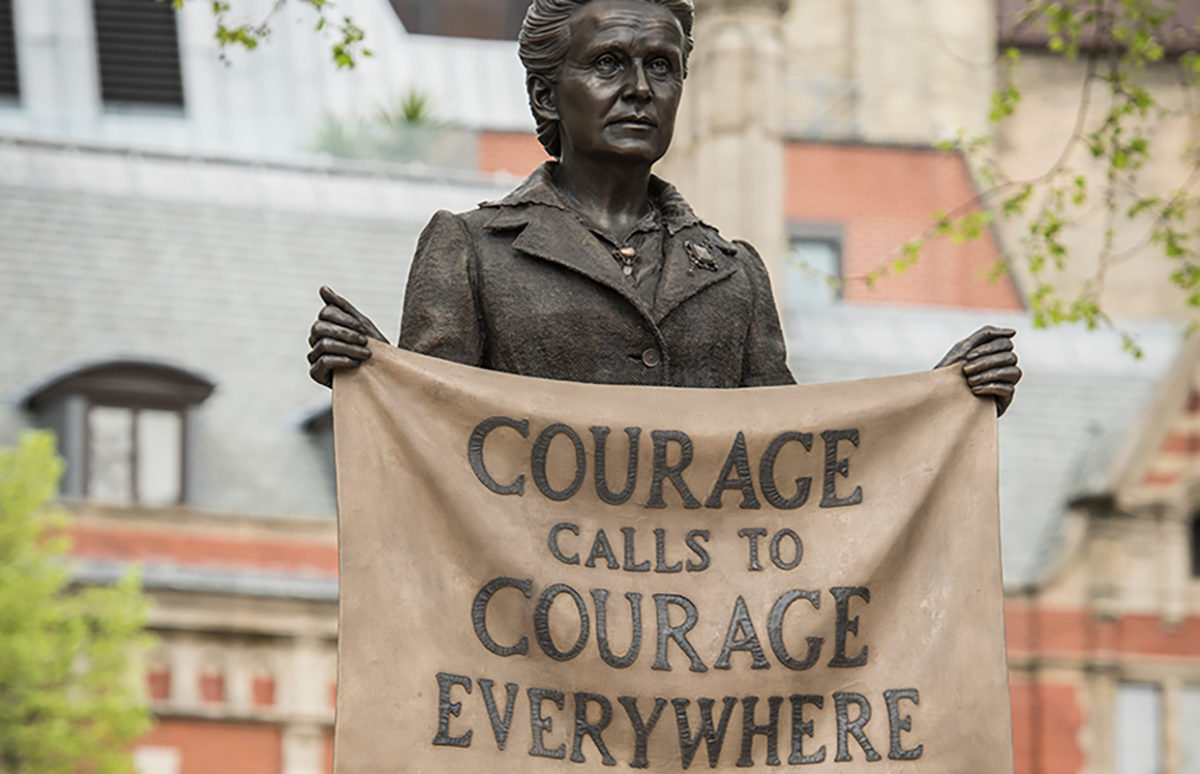A hundred years after some British women got the right to vote, there is finally a woman among the statues of political and democratic heroes on Parliament Square outside the Palace of Westminster. London Mayor Sadiq Khan unveiled the statue of Dame Millicent Fawcett on 24 April.
There had been an organised and popular movement for women's suffrage in the UK from the 1860s onwards, and Millicent Fawcett was one of its leading lights. Born in 1847, she started campaigning as a teenager. She was President of the National Union of Women’s Suffrage Societies (the NUWSS) from 1907 to 1919. Fawcett married a Liberal MP and campaigned for the rights of working-class women and trades unions as well as the vote.
The suffrage campaign took on a higher profile from 1903, with the formation of the Women's Social and Political Union, led by Emmeline Pankhurst. The WSPU, soon dubbed "Suffragettes", was more actively militant that the older, meeker Suffragists. Its members participated in civil disobedience such as chaining themselves to railings or attacking public property. They were regularly jailed for their actions, and went on hunger strike. The Government's decision to forcefeed hunger strikers was one turning point towards victory.
Another was the women's campaigners' attitude to the First World War. The WSPU suspended its campaign for the duration of the war and many women threw themselves into war work, replacing men who were sent to the front in factories, on farms and in public services.
Votes for All
1918 is remembered as the year when some women finally got the right to vote, and to stand for election. But in fact, only two out of three men had the right to vote before 1918. The others were excluded by property restrictions. The Great War was a major democratising factor. It was no longer possible to imagine excluding parts of the population from the democratic process.
Finally, on 6 February 1918, the combined efforts of campaigners paid off as Parliament enacted the 1918 Representation of the People Act, which gave the vote to all men over 21 as well as women over 30 who were householders or married to householders, or the few women who had a university degree. Women had to wait another ten years for parity, because Parliament was wary of the sudden majority of women voters that would have been created if all women had been given the vote in 1918. The war had decimated the male population, making women more numerous proportionately. The 1918 Act resulted in just over 40% of the electorate being female.
Universal franchise was finally granted with the Equal Franchise Act of 1928.
Celebrating Suffrage
When Sadiq Khan (Labour) was elected Mayor of London in 2016, he promised to commission the first statue of a woman in Parliament Square, in response to a petition launched by feminist journalist and campaigner Caroline Criado Perez.
It is also the first statue in the Square by a female artist, Gillian Wearing.

Fawcett's statue now stands alongside politicians and campaigners such as Benjamin Disraeli, Winston Churchill, Nelson Mandela and Mohandas Gandhi. The unveiling was attended by the UK's second female Prime Minister, Theresa May.
In homage to the collective nature of the suffrage campaign, the statue's plinth is decorated with images of 59 other campaigners, male and female, for the cause of universal suffrage.
Fawcett's legacy is continued today by the Fawcett Society, which continues to campaign for gender equality. It raises awareness of the gender pay gap, and points out that 100 years after women got the vote, only 30% of MPs are women.
There is an online exhibition and downloadable leaflet about Millicent Fawcett on the UK Parliament site.
Copyright(s) :
London Mayor
Tag(s) : "amazing women" "Emmeline Pankhurst" "gender equality" "Millicent Fawcett" "Sadiq Khan" "Suffragists" "UK politics" "universal suffrage" "votes for women"





